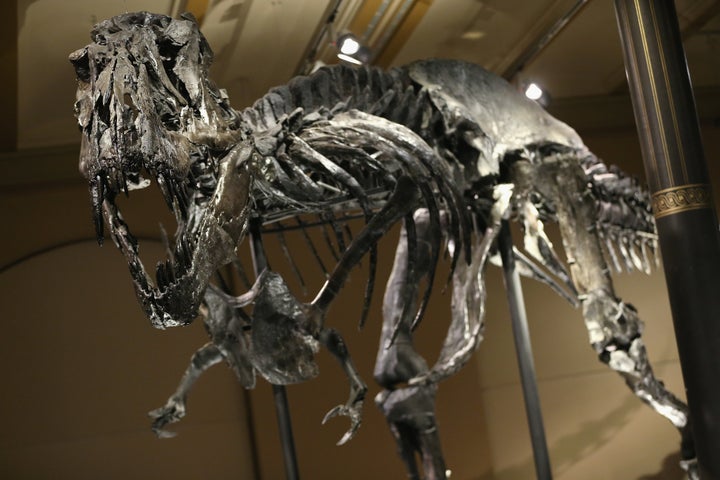Several dinosaur species were wiped out during a wave of intense climate change triggered by volcanic eruptions 150,000 years before a devastating asteroid struck the planet, according to a new reconstruction.
The research suggests that global temperatures soared as huge quantities of carbon dioxide gas were released from India's Deccan Traps volcanic region. Ten of 24 species found on one Antarctic island were wiped out.

While both the eruptions and asteroid strike ejected ash and dust that caused short-term Sun-blocking, the cooling period was short-lived. Greenhouse gases released in the process created significant warming episodes that would ultimately lead to the demise of dinosaurs, according to the research.
“We find that the end-Cretaceous mass extinction was caused by a combination of the volcanism and asteroid impact, delivering a theoretical ‘one-two punch’,” study co-author Sierra Petersen of the University of Michigan, told Agence France-Presse.
Two University of Michigan researchers and a Florida colleague analysed the chemical composition of fossil shells, which indicate a period of significant warming before the asteroid strike.
The extinction was the second biggest in the history of the planet, killing nearly half of all life, including every non-avian dinosaur, and leading to the rise of the mammals.
The University of Michigan revealed in a statement that the shells lived 65.5m to 69m years ago in a shallow coastal delta near the northern tip of the Antarctic peninsula.
It’s believed that the currently ice-covered continent was then covered by coniferous forest.
Ocean temperatures rose about 7.8C after the volcanic eruptions emitted poisonous gases into the atmosphere.

“This new temperature record provides a direct link between the volcanism and impact events and the extinction pulses – that link being climate change,” said Petersen.
The team concluded that pre-impact warming due to eruptions “may have increased ecosystem stress, making the ecosystem more vulnerable to collapse when the meteorite hit”.
The cause of the so-called Cretaceous-Palaegene mass extinction has long been debated.
Some scientists believe it was solely a result of the impact, some volcanism, while others consider it a combination of the two.
Several recent studies indicate eruptions that occurred before the crash are partly responsible.
Scientists now believe that human caused global warming could cause the sixth mass extinction event in half a billion years.
